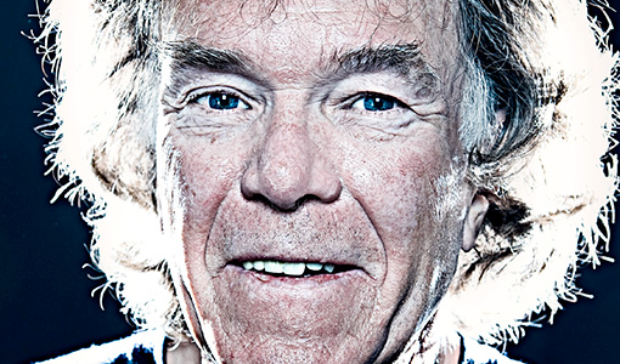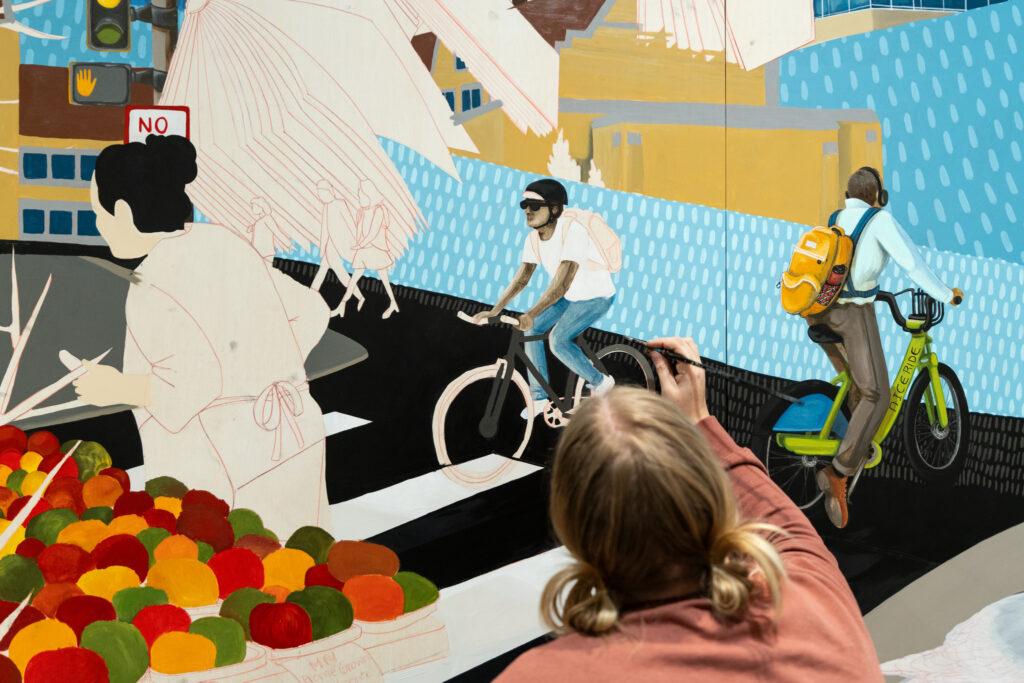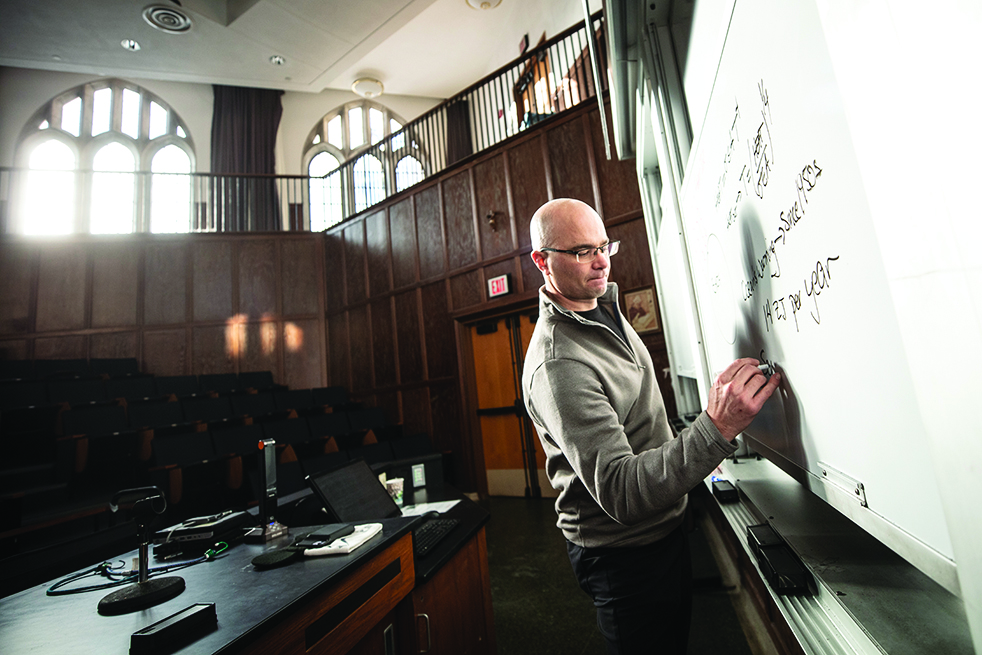As one of nine kids raised in Richfield, Minn., my parents gave us total freedom to explore, just as long as we received good grades and stayed on the right side of the law. At 15, inspired by the adventures of Huck Finn, my brother and I took a motorboat down the Mississippi River from Minneapolis to New Orleans and back; this was my first and last motorized expedition. Then in 1964, as a 19-year-old junior at St. Thomas, I purchased a tract of land on the edge of the Boundary Waters Canoe Area, three miles from the nearest road.
While an undergraduate student, I fell in love with geology; the subject encouraged me to explore my home state of Minnesota, spend time outside and understand the planet from a global perspective. It was through my friendship with my professor, Jack Brownstein, that I realized I wanted to find a way to combine my passion for the environment and education.
Jack was extremely engaging and created a peer relationship with his students. When I wasn’t in class, I spent my spare time in his office where we would pore over maps, visit unexplored places and debate global issues. His enthusiasm was contagious, and his constant emphasis that learning could be found everywhere stays with me to this day. Our relationship continued until he passed away in 1999.
I have never seen such drastic changes in the Arctic as quickly as I have in the last five years.
Soon after graduating with a degree in geology, I knew I needed to earn a master’s degree in education so that I would have a solid foundation of credentials for my career. I continued my studies at St. Thomas and taught middle school science for three years in the 1970s, where I taught the basics of global warming. I then moved to my wilderness home north of Ely.
While I loved the feeling of teaching and enjoyed my students, I wanted to reach more people with my message. I knew that to get people excited about learning, like Jack did, I needed to ignite their curiosities first and add content second. It was with the advent of the Internet in the early 1990s – and early recognition for my polar expeditions– that I was finally able to reach thousands (and eventually millions) of students and share my experiences from both poles.
After several years of organizing educational expeditions to the Arctic and Antarctic in partnership with universities, including the World School for Adventure Learning at UST’s School of Education, I turned my attention to creating an organization that would incorporate my interests in the environment, international cooperation and education. And in 2006, I established the Will Steger Foundation, a nonprofit organizationdedicated to creating programs that foster international cooperation and leadershipthrough environmental education and policy. Our work to date has focused on the most critical issue and opportunity of our time: global warming – also referred to as climate change.The effects of global warming are not to be dismissed, despite the onslaught of – and at times misleading – information we receive on this critical issue. While the number of consumer products and reports touting the latest “green” or sustainable initiative can lead to a serious case of “green fatigue,” we shouldn’t let the marketing of thisissue get in the way of the facts. It is critical that we understand what is happening first, and then figure out ways that we can do more as individuals, as communities and as countries that share the same planet.I have never seen such drastic changes in the Arctic as quickly as I have in the last five years. Every ice shelf I have crossed by dogsled, foot or skis has now disintegrated into the ocean. In the summer of 2007 alone, the Arctic Ocean summer sea ice shrunk by an area twice the size of Texas.
Leading scientists studying the effects of global climate change report that we have less than 10 years to make significant changes in our behavior. The Intergovernmental Panel on Climate Change (IPCC) predicted in early 2007 that unchecked global warming could erase all of the Arctic Ocean’s summertime ice as early as 2070; however, another prediction emerged in December 2007. Following the year’s dramatic melt season, a credible new estimate from the U.S. Naval Postgraduate School in Monterey, Calif., indicated that there could be no summer ice in the Arctic as early as 2013. Zero ice in five short years. An eye-blink away.
Early in 2007, I returned to Baffin Island in the Canadian Arctic via dogsled with three educators and three Inuit hunters who would be our eyes and ears to help document the changes that global warming is having on their culture and the Arctic.
As our group visited remote Inuit communities along the way, we heard over and over again about concerns they have about the changing Arctic environment.We heard much evidence of this change, of new species migrating north, of warming oceans and melting sea ice, and of the impact this has had on the delicately balanced Arctic ecosystem.We also learned about the Inuit spirit of resiliency and adaptation.When asked about Inuit cultural survival in the face of global warming, we heard the same reply: The Inuit will continue to adapt as they always have. The question many Inuit asked us in return was simple – can the people of the south adapt?
Having returned from Baffin Island three months later, green issues graced the cover of almost every major publication. But I knew that we didn’t just need education and media coverage; we needed action at all levels. I thought that if I began working with young people – ages 17-28 – I could have a different type of impact, and at the same time catalyze a movement. I selected six 21-28 year olds from four countries to join me on another dogsled expedition in 2008, this time to Ellesmere Island, only 400 miles from the North Pole.
The polar sea has lost half of its thickness and area in the last two decades.
From the adventures of dogsledding across exceptional stretches of Arctic Ocean ruins to the unexpected challenges of a refashioned topography and surprising polar bear encounters, my team and I bore witness to an inimitable first-hand account of the effects of global warming.
Added to the rough ice from the Arctic Ocean’s ruins, we experienced a three-week early spring thaw near Eureka, Nunavut, our final destination. Our eyewitness account of these changes was later confirmed by former Vice President Al Gore during a meeting in New York City, a meteorologist on Norway national television, and UK economist Nicholas Stern at a climate conference in Norway.
Another critical goal of the expedition was to be the first overland mission to visit what was left of the Ayles Ice Shelf, which disintegrated in August 2005 in the largest break-off of the ice shelf in more than 25 years. The Ayles Ice Shelf was one of six ice shelves left in Canada, remnants of a vast icy fringe that used to cover the top end of Ellesmere Island.
On a large scale, what we are witnessing around the world are feedback loops that spur large and rapid changes to our environment. The Arctic Sea ice is a great example of those changes.
The polar sea has lost half of its thickness and area in the last two decades. Its once reflective surface is now exposing the darker ocean surfaces; because darker surfaces absorb more light and energy than lighter surfaces, warmth is accelerated and leads to more melting of ice. As a result, without any additional greenhouse gases, the Arctic will soon be ice-free during the summer. If the summer sea ice disappears, animals like the polar bear and walrus will face extinction.
In 1990, I testified before Congress about the danger of global warming leading to a thaw of the northern permafrost, which will release methane gas – a dangerous greenhouse gas – into the atmosphere. This process is now in motion. The record warm summers in the Arctic are advancing the thaw of the high elevations of theGreenland ice cap. West Antarctic and Greenland ice sheets are vulnerable to even small additional warming. These two-mile-thick behemoths respond slowly at first, but if disintegration gets well under way, it will become unstoppable. The loss of ice that we are now experiencing worldwide is the fingerprint of global warming.
Throughout the next 10 years, we must significantly reduce our emissions from today’s levels. By the year 2050, we must have cut those emissions by 80 percent.
Debate among scientists is not about if, but rather by how much, sea level will rise by a given date. If emissions follow a business-as-usual scenario, a sea level rise of at least two meters is likely within a century. Hundreds of millions of people would become refugees, and no stable shoreline would be reestablished in any time frame that humanity can conceive.
Morally, we see very real impacts on the human race. The Inuit hunting culture depends on Arctic ice. The melting sea threatens to obliterate this culture.With melting, low lying island-nations will sink. Intense hurricanes and other global warming-related disruptions will bankrupt economies and threaten to end the march of civilization as we know it.
The Arctic and the Antarctic regions have been my home for more than 45 years. To survive, I have become intimately familiar with their vast lands, wildlife, climates and cultures. The changes I see deeply affect me in a way neither a scientific study nor a satellite image could. Without action, life in the Arctic faces extinction. With action, we can address the root causes and limit the impact. The latest findings by the IPCC state that the world has the capacity to reduce global warming in less than 30 years, using existing technology. It again stresses the importance of taking action now to reduce the worst impacts to the world’s most vulnerable populations.
So, how can we act to avert the worst consequences? Throughout the next 10 years, we must significantly reduce our emissions from today’s levels. By the year 2050, we must have cut those emissions by 80 percent. I am confident that if we educate ourselves and reconnect with our communities – whether it be at an institution like St. Thomas, a church, a synagogue or a neighborhood, we can reduce our fossil fuel consumption and eventually chart a different course for the Arctic.
We need discussion and engagement, but also the desire to live differently than we have until now. I am driven by a commitment to solutions, and I believe that the efforts at St. Thomas are just some of many examples of the ways we can actually practice what we teach.
Dramatic change is a personal and societal responsibility. It requires perseverance, courage, tenacity – the qualities of a polar explorer. By connecting people to people, place to place, spirit to spirit, we can mobilize and act to make a difference.
Journal entry – Ellesmere Island “In 45 years of Arctic exploration, I have never witnessed ice conditions like what I experienced on this expedition. As confirmed by the U.S. National Snow and Ice Data Center upon our return, we traveled through the ruins of the Arctic Ocean, encountering the melt of multiyear ice from the top of the globe. As an eyewitness to the changing topography of the Arctic, I was stunned to see the rapid repercussions of global warming for the region, its wildlife habitat and indigenous cultures. Swift loss of sea ice will considerably alter the landscape of the polar regions as we know it.” – Will Steger, June 2, 2008
Related Links
Global Warming 101
Will Steger Foundation
 Editor's Note: Will Steger is photographed along the Mississippi River below downtown St. Paul. In the background is District Energy St. Paul, an innovative and energy efficient company that according to its website "operates the largest, most successful, biomass-fueled hot water district heating system in North America."
Editor's Note: Will Steger is photographed along the Mississippi River below downtown St. Paul. In the background is District Energy St. Paul, an innovative and energy efficient company that according to its website "operates the largest, most successful, biomass-fueled hot water district heating system in North America."







